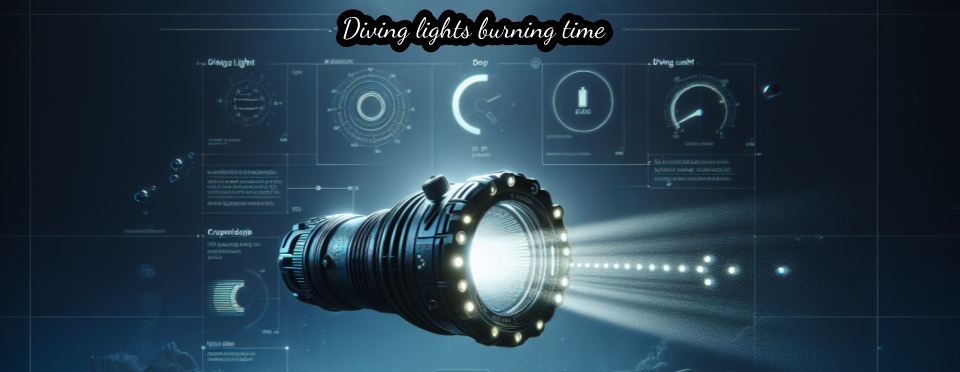
30 Apr Calculating the Burning Time of Diving Lights
Among the many pieces of equipment necessary for underwater exploration, the diving light is essential. Whether it’s for deep-sea diving or night-time diving, diving lights play a crucial role. However, many diving enthusiasts may not have clarity regarding the key factors influencing burning time of a diving light and the calculations involved. In this article, we delve into this topic, discussing the impact of elements like battery capacity, current, voltage, and power on the burning time of diving lights, and how to calculate it realistically.
Let’s first understand what these elements mean:
- Battery Capacity: Measured in milliamps (mAh), it depicts the current a battery can deliver in a unit of time. For instance, a battery with a capacity of 3000mAh can theoretically supply a current of 3000 milliamps for an hour continuously.
- Voltage: Measured in volts (V), it dictates the intensity and direction of the electric current.
- Power: Measured in watts (W), it is an indicator of the rate at which a diving light (LED) consumes energy in operating condition.
Next, how can we calculate the burning time of a diving light based on these parameters?
Here are the steps:
- Compute the current needed when the diving light is in operation. Use this formula: Current (A) = Power (W) / Voltage (V). The standard unit here is amperes (A), although we commonly express it in milliamps (mA).
- Then, divide the battery capacity by the current demand. This gives us the theoretical burning time of the diving light. Calculate it using the formula: Burning Time (Hours) = Battery Capacity (mAh) / Current Demand (mA).
Let’s illustrate with a practical example. Suppose your diving light has a power of 3W, battery voltage of 3.7V, and a battery capacity of 3000mAh.
Firstly, calculate the current demand: Current = Power / Voltage = 3W / 3.7V = 0.811A, equivalent to 811mA.
Next, calculate the burning time: Burning Time = Battery Capacity / Current Demand = 3000mAh / 811mA = 3.7 hours. So, theoretically, this diving light can provide continuous illumination for 3.7 hours.
However, this is purely theoretical. In an actual environment, the actual burning time might differ due to influences like the quality of the battery, the power efficiency of the LED beads, the design of the diving light, and heat dissipation. Currently, most diving lights are designed with switches for different brightness levels or non-constant current modes for longer burning times.
In summary, understanding how power, voltage, and battery capacity affect the burning time of your diving light can help you make a more informed purchase and use of diving lights. I hope this article proves beneficial to your diving activities. If you have any doubts or experiences to share, feel free to comment below!




No Comments